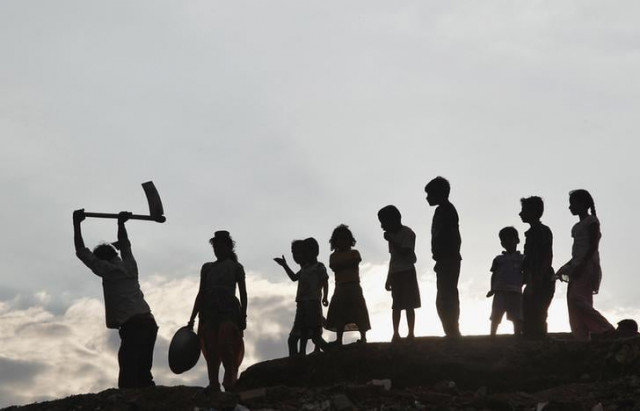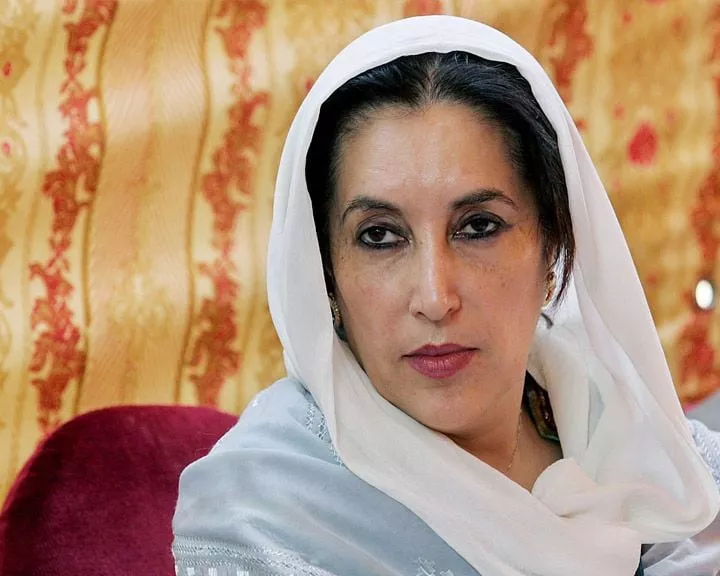10 years on, 70-year-old Mano Bheel yet to receive justice
Heirs of petitioners cannot pursue bonded labour case, argues defendant

There are around 15 million people, including women and children, engaged in different forms of forced labour. PHOTO: REUTERS
The case is now fixed on May 5 when the court is likely to rule whether or not the legal heirs of the victims, who were forced into bonded labour but have now died, can challenge the acquittal of the feudal lord.
The acquittal of the landlord, Abdul Rehman Mari, was challenged by a victim of bonded labour, Mano Bheel, who has since turned into an anti-slavery activist.
Workers, activists urge govt to introduce labour law reforms
Bheel accused Mari of forcing many famers into bonded labour. According to him, the landlord had abducted 11 of his family members 18-years-ago. They included his 70-year-old father, Khero, 60-year-old mother, Akho, 40-year-old wife, Motan, 25-year-old brother, Talal, two daughters, 13-year-old Momal and one-year-old Dhanee, his two sons, 10-year-old Chaman and eight-year-old Kanjee, and relative, Kirto.
All of them were taken away for a mere Rs190,000 loan that they took from the landlord years ago, alleged the 70-year-old man whose ordeal had once made headlines across the world after the then chief justice of Pakistan, Iftikhar Muhammad Chaudhry, took suo motu notice on the complaint of a Swedish human rights activist, Torborg Isakssan.
Justice Chaudhry's efforts to rescue the victims were interrupted when he was sacked on November 3, 2007. By the time he was restored two years later, the landlord had already been granted an acquittal.
SC terms delays in court proceedings 'denial of justice'
According to Bheel, the police filed a case on the orders of the apex court and a charge-sheet was filed with a district and sessions judge against nine suspects, including Mari. During the judicial crisis of 2007, when Justice Chaudhry and other judges were sacked, the trial court disposed of Bheel's kidnapping case and released all the suspects who had denied the allegations.
Bheel claimed the decision was given in his absence as he had never received any court summons. He even staged a hunger strike, lasting 1,287 days, outside the Hyderabad Press Club to protest his family's kidnapping.
Bonded labour in Pakistan
Pakistan has ratified different United Nations' conventions and treaties, such as the Forced Labour Convention No 29 and Abolition of Forced Labour Convention No 105 to abolish forced labour. However, the practice still exists in various parts of the country.
For Registered Labourers: Labour Complex nearly built: WWF
There are around 15 million people, including women and children, engaged in different forms of forced labour, according to Nasir Mansoor, deputy general secretary of the National Trade Union Federation.
Most of them are impoverished members of the Hindu and Christian religious minorities like Bheel, who are forced in the bonded labour by the feudal lords and owners of brick kilns.
Struggle not over
Since the restoration of the judiciary, the anti-slavery activist resumed his legal battle. He filed a criminal miscellaneous application with the Sindh High Court on March 31, 2010.
Child labour: Eight children handed over to protection bureau
"It took months to hear arguments from the parties," Salahuddin Panhwar, the lawyer representing the 70-year-old activist, told The Express Tribune. "Fifteen judges heard the matter and 47 hearings were conducted before the matter was reserved on March 30 this year," he added.
It gave some hope to Bheel and others like him but the defendants had other arguments that could delay the case. "During these years five to six victims of bonded labour, who were the applicants along with Bheel in the case, have died," said Panhwar. "Now, the other side has raised the question of the entitlement of their legal heirs to pursue the case," he added.
Before the court would have pronounced its verdict, an application was moved by the lawyer of Mari, pleading to determine entitlement of the legal heirs to pursue the case as the applicants had died.
Ever since nine hearings have been conducted and the matter is fixed on May 5 for the judge to head further arguments.



















COMMENTS
Comments are moderated and generally will be posted if they are on-topic and not abusive.
For more information, please see our Comments FAQ